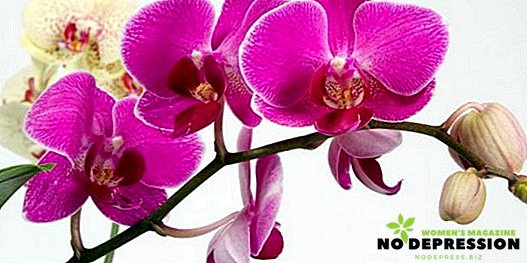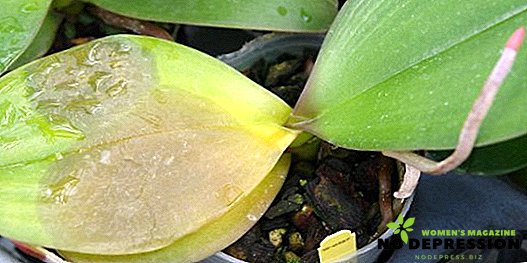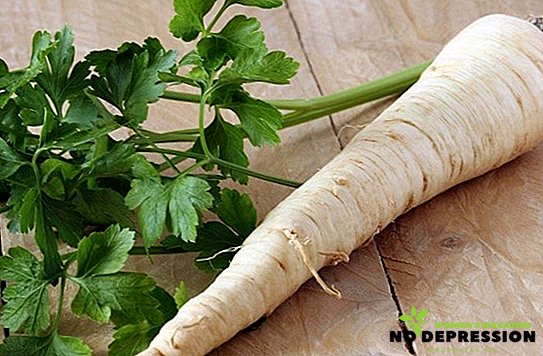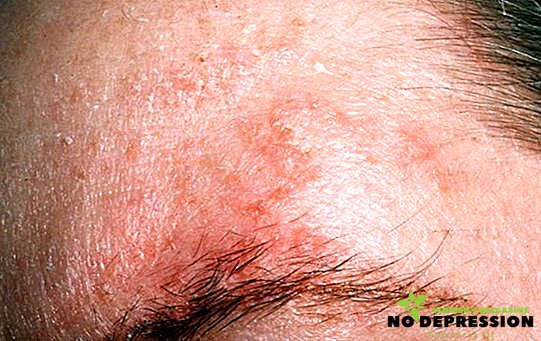The orchid has always caused trepidation and genuine amazement among flower growers with its variety of shapes and colors, as it resembles a miracle that has come from the depths of the centuries and has survived to the present day.

Phalaenopsis: a brief description of the orchid
Orchids grow in the rain forests in the Philippines. This plant epiphytes, which grow in the crowns of trees. This orchid has a rather short stem, dense leaves with sometimes speckled color, reaching a length of 25 cm.
Orchid blooms almost the whole year, expelling a spike about 90 cm long. It grows from the base of the stem and branches at the very top at the ends, forming buds.
The following orchids are on sale:
- Orchid hybrid, which includes several obtained by breeding plant species with long flowering.
- Orchid Luddemana, she has six or seven wide, long, up to 20 cm of leaves. The lancet petals are covered with transverse stripes and the flower has a small lip with a complex structure.
- Orchid "Pink", the length of the leaves reaches 15 cm and on a slightly tilted peduncle alternately opening up to 14 pieces of light pink small flowers are arranged alternately.
The flower owes its name to the two Greek words phalahia, which means "moth" and opsis "similarity". Indeed, it is true that these flowers look like fluttering moths and look unreal beautifully. Flowers have varying degrees of flavor and vary in color and appearance.
Features care phalaenopsis orchid at home
First of all, after the store, the flower must be transplanted from the purchased soil and examine the roots of the flower. If this is not done immediately after the purchase, then its roots may rot, as is usually not observed in shopping centers for compliance with the irrigation regime.
 In order to transplant it, we will need a small bowl, a wooden stick with a blunt end, a piece of newspaper or a tray (the latter is preferable, since it does not soak during work).
In order to transplant it, we will need a small bowl, a wooden stick with a blunt end, a piece of newspaper or a tray (the latter is preferable, since it does not soak during work).
We also need a special soil for phalaenopsis orchids, cut into fragments 1x1 cm in size, pine bark, a plastic pot by the size of the root, succinic acid (purchased in human pharmacies) or zircon and any fungicide - Odan, Previkur - any of them. Getting to the transplant.
First you need to remove the orchid from the purchased soil. To do this, we carefully remove the flower from the pot, shake off the substrate in which it was sold (most often it is peat) and examine if there are any pests.
If the soil is not shaken off, then gently release the roots from the soil with a wooden stick. If this does not help, then we pour warm water into a basin, put an orchid in there and lightly wash the flattened soil.
When everything is washed off, carefully inspect the roots of phalaenopsis, as there may be pests, if necessary, treat the existing fungicide.
Another procedure is to remove all rotted or dried roots, cutting them with scissors. At the same time, it is necessary to sprinkle the slices with charcoal, which can be replaced with activated charcoal purchased at a pharmacy.
 Remove yellow leaves if they are present and can be planted in the prepared substrate, having previously dried the roots for about 8 hours or a little more if they were soaked in warm water in a basin.
Remove yellow leaves if they are present and can be planted in the prepared substrate, having previously dried the roots for about 8 hours or a little more if they were soaked in warm water in a basin.
As already mentioned, the pot should be transparent with a large number of holes in the bottom of the pot, from where excess water will flow after watering.
Put the foam on the bottom of the pot, put the orchid in the center and slowly pour the substrate around it. It is important to fill all the space between the roots, for this we tap the pot with a pot on the table. The point of growth must necessarily remain above the surface of the earth.
The transplanted phalaenopsis orchid should not hang out in a pot. After transplantation, the most important thing is not to water for five days and put the pot with a flower on the window of the east orientation. Water only with warm water. To begin to fertilize a flower only in a month and only fertilizer for orchids.
Choosing a place for an orchid, its mode of irrigation and fertilization
Phalaenopsis orchids fit a western or eastern window, on a sunny window in summer they risk leaf burns, and the flower needs shading for the summer.
So that the flowers do not suffer from central heating, you can expand the window sill by putting foam plastic on it, projecting behind the window sill or covering the top of the battery so that the heat from them does not go directly to the flowers. So Phalaenopsis orchid is harmful as a surplus of light, and its disadvantage.
Fully produce natural conditions in the apartment, of course, will not succeed, but it's worth a try. And the flower will tell you what it lacks. If an orchid has a red leaf, this indicates an excess of sunlight, which is good in summer, but in winter it may die.

You can protect the flowers from the sun by hanging tulle or gluing a reflective film on the window. The lack of light is manifested in the fact that the leaf becomes dark green with a bluish tint. Lack of light can be compensated by backlighting.
Often, buying Phalaenopsis orchid, beginners do not know what to focus on to water it. First of all, it is necessary to focus on its roots in a “full” flower; they are light green and dense; as they need watering, they will become light gray.
It is also one of the signs that the orchid needs watering is the initial wilting of the lower leaves. After watering, they must recover and become resilient. Watering also depends on the season, in the winter it is watered about once twice a month.
 There is a method of watering orchids, it is called immersion. It is used every 3 weeks, when the roots are completely dry and the pot becomes light, and condensation on the walls of the clear pot disappears.
There is a method of watering orchids, it is called immersion. It is used every 3 weeks, when the roots are completely dry and the pot becomes light, and condensation on the walls of the clear pot disappears.
To do this, each phalaenopsis orchid is immersed in its own separate bowl of warm water (to avoid infection) for about 20 minutes, then taken out of the water, allowed to drain to excess water and placed either on a tray or in a pot.
Also, there is a cure, this is the easiest and most common way. Warm water is poured into the watering can and it is poured onto the ground in a small stream to moisten it without hitting the leaves of the plant. The excess water will also be poured onto the pallet, which after 10 minutes will have to be removed from the pallet. This watering is recommended after lunch.
There is a warm shower technique. This technique mimics tropical showers. To do this, you need to put Phalaenopsis orchids in the bath on the crossbar and water with a warm stream of water from the shower.
Such procedures can be arranged several times a month, with a duration of approximately 20 minutes. Then you need to dry wet the corners of the leaves, so as not to start to rot the trunk of the flower.
 You can create an individual irrigation schedule only for the flower owner, since all the conditions of orchid maintenance in each house, apartment, office are very different. For example, in a warm room with dry air should be watered more often. If you are damp and cool, then once a month is enough.
You can create an individual irrigation schedule only for the flower owner, since all the conditions of orchid maintenance in each house, apartment, office are very different. For example, in a warm room with dry air should be watered more often. If you are damp and cool, then once a month is enough.
Under natural conditions, living on a tree, an orchid can extract nutrients from the tree itself. But at home in store soil they will be missed, for this, and use mineral fertilizers for orchids.
Water the flower with fertilizer only at the moment of growth or flowering, at the moment when the flower is resting, it is impossible to feed. You can not water the fertilizer on dry roots, because after that they can burn. You can fertilize only a healthy plant; after transplantation you cannot fertilize as much as about a month and a half.
The period of flowering and reproduction orchids
Phalaenopsis orchids bloom from January to December. The main problem of gardeners, with whom they face, is the reluctance of orchids to bloom. First, orchids begin to bloom at the age of one and a half, about 5-6 leaves, and provided that it has a nighttime daytime temperature drop of about 7 degrees.
Also, to make her bloom, there is a way in which she must be kept for two to three weeks at a temperature of 16 degrees and after that she will start to bloom.
Having flowered, you wonder how long the orchid blooms.
Even after the flowers disappear, it is not necessary to cut the flower stalks, as dormant buds can wake up on them and the flowering will repeat. In order for flowers to please you even longer you need to prevent the substrate from drying out.
The reproduction of orchids phalaenopsis at home sometimes seems an impossible condition. But with a certain approach, you can try to do it. To do this, they take an orchid that has faded and rested for a couple of months and pruned the peduncle to the first living bud.
At the same time, in the room where the orchid stands, there should be increased humidity, it should stand on such a window sill, where at least sometimes there is sun for several hours and the ideal time for the formation of cuttings is from February to June.
 In order to quickly form the cuttings it is necessary, as in the stimulation of flowering, the temperature difference between day and night temperatures of about 7 degrees. Only in this case, instead of flowers on the flowering peduncle there will be cuttings. Watering at the same time should be small. After the sleeping kidney is awakened, the spring sun will play its role.
In order to quickly form the cuttings it is necessary, as in the stimulation of flowering, the temperature difference between day and night temperatures of about 7 degrees. Only in this case, instead of flowers on the flowering peduncle there will be cuttings. Watering at the same time should be small. After the sleeping kidney is awakened, the spring sun will play its role.
After the phalaenopsis layer has grown on itself two pairs of leaves and a pair of roots about 5 cm, it is carefully separated from the parent bush. Some experts argue that the roots on the cuttings do not wait until it grows on the mother plant and therefore it is separated when four leaves grow on it.
The slices are powdered with charcoal or cinnamon to prevent rot. The layers are dried during the day and planted in small fractional substrate for growing roots. Gradually, the lower leaves of the layers lose their turgor and turn yellow, but they cannot be cut off. At this time, the layering builds up the roots. It is best to grow them in a greenhouse, where the air temperature will be +22 degrees and high humidity.
 To stimulate the appearance of a layer, you can also remove the scales that cover the kidneys, then smear them with hormone cytokinin paste (sold in gardening centers or shops) and wait for the kidneys to spill.
To stimulate the appearance of a layer, you can also remove the scales that cover the kidneys, then smear them with hormone cytokinin paste (sold in gardening centers or shops) and wait for the kidneys to spill.
Phalaenopsis orchid can be propagated in such a way as cutting the peduncle, cut it into pieces, so that each has a sleeping kidney. Process cuts as charcoal or cinnamon, and then each individual stalk is planted in a separate container and covered with glass.
Diseases and pests
The most common diseases of orchids are phalaenopsis:
- Bacterial leaf spot - a well-defined ulcer appears on the leaf, which, when pressed, releases fluid. Treatment - cut off the damaged leaf, sprinkled with the charcoal cut. If it does not help, then treat with special preparations;
- Mealy dew is a fungal disease, reminds, as if the flower is covered with flour. Such a disease often appears from high humidity. It is treated with antifungal drugs (Topsin-M or colloidal sulfur);
- Rot - orchids are confirmed rot caused by fungi and frequent bays of the plant. The plant can be cured only completely, removing the rotting parts, then adding charcoal or colloidal sulfur to it, while at the same time changing the ground completely and pouring boiling water over the pot.

Pests that were seen on orchids:
- Thrips - tiny insects that are located on the leaves, suck juice from them, injure them, after which the leaf dries out, and in the roots it lays the larvae. Control measures - to shed the ground with an atelica no less than three times with an interval of 5-7 days;
- Shchitovki - suck out the juice of phalaenopsis plants after themselves, leaving wounds on the leaf and a sticky liquid. Control measures - manually collect all shield insects and then shed the ground with an actor. Twice with an interval of 5 days;
- A mealybug - it is rather difficult to notice it on orchids, but if you notice small white fluffy lumps in the leaf axils it is a scarlet. Control measures - ear stick moistened in a solution of alcohol to collect all the lumps with the worms and process the fitoherm. If after a month nothing has appeared, it means that you got rid of the pest.

Mealybug
But we can say that with proper care, all these diseases do not appear.
Ordinary and mini orchid - are there any differences in their care?
Caring for mini orchids is no different from caring for standard orchids. But the benefit is that they take up much less space on the windowsill. The only thing that needs to be adjusted is watering. Since the pot is very small, the substrate dries very quickly. Therefore, we must follow the watering.
Question answer
Why do orchids turn yellow leaves?
This means that the plant has not regulated watering.
What makes the bottom sheet completely yellow?
Most likely, this is due to the aging of the leaf naturally.
Are the leaves on the orchids pale?
Either strong underfill or poor lighting.
On phalaenopsis orchid flowers drooped in the fall?
Most likely, not enough lighting.
Is a fluorescent lamp suitable for lighting?
Yes, it will.
Why did my orchid root out of the pot?
Spray more often to not dry roots, or put in a large pots, not replanting, or make a full transplant in a larger pot.
When buying an orchid, do not be afraid that it will not survive for some reason. After reading the article, you can understand that everything is not so difficult, you just need to follow some rules and the flower will delight you for a long time with its flowering.
In the next story you can see how to replant an orchid.













